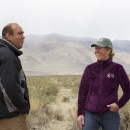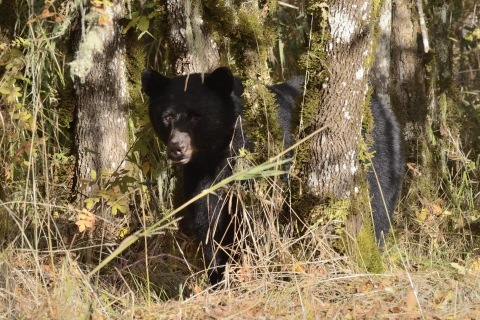Visit Us
The refuge is open every day from dawn to dusk and is always free. Visiting the 5,325 aces of William L. Finley NWR is a great way to see what the Willamette Valley once looked like, when the Kalapuya were stewards of the land. With over 12 miles of trails, you can see the rare and historic Valley habitat types: Oak savanna, wetland prairie, mixed forest, riparian riparian
Definition of riparian habitat or riparian areas.
Learn more about riparian , upland prairie and both permanent and seasonal wetlands. Walk the Homer Campbell Memorial Boardwalk to the Observation Blind for an up-close look at water birds, geese, bald eagles, and other wildlife. Walk the Woodpecker loop through the different habitats and an get exceptional view of the valley and the Cascade Range.
Visit in the Spring and walk through a rainbow of native wildlife flowers in the prairies or stop by in the winter to see swans and Roosevelt elk. People enjoy viewing the diverse wildlife and picturesque vistas, whether on a determined hike, leisurely walk, or just driving through.
Take a brochure with you on your adventure! The William L. Finley Refuge Trail Brochure and Willamette Valley NWRC Bird List are downloadable here and are also at kiosks throughout the Refuge.
Snag Boat Bend Unit
The 376 acres that make up the Snag Boat Bend unit are a blend of riparian forest, backwater sloughs and seasonal wetlands. Trails here will take you through seasonally flooded habitat, along ponds and to the edges of the Willamette River.
Location and Contact Information
- William L. Finley National Wildlife RefugeView DetailsWillamette Valley National Wildlife Refuge Complex Headquarters 26208 Finley Refuge Road Corvallis, OR 97333-9533
About Us
Established in 1964, the William L. Finley National Wildlife Refuge’s primary management goal is to provide wintering habitat for dusky Canada geese. Unlike other Canada goose subspecies, Duskies have limited summer and winter ranges. Their population is small, too, hoovering around 16,000 geese. They nest in Alaska’s Copper River Delta and winter almost exclusively in the wetlands of the Willamette Valley—much of which was drained to provide open fields for agriculture and pasture during the 19th century European settlement. With the extensive habitat restoration projects at work on all 5,325 acres of the refuge and the 341 acres of its Snag Boat Bend Unit, it makes exploring these special places like taking a step back into the natural history of the Willamette Valley.
Tours
To schedule a program, tour, or field trip of William L. Finley National Wildlife Refuge, contact willamettevalley@fws.gov or (541) 757-7236.
What We Do
Located ten miles south of Corvallis, Oregon the refuge protects many of the historic habitats of the valley, including the largest remaining tract of native Willamette Valley wet prairie. Fields of grass for wildlife are interspersed with Oregon white oak savanna, meandering creeks with bottomland Oregon ash forest, old growth bigleaf maple, and native prairie.
Management goals are to preserve native species and enhance biodiversity including the rare oak savanna, upland prairie, and wet prairie habitats. Endangered and threatened species such as Streaked-horned lark, Fender's blue butterfly and Kincaid's lupine find protection and sanctuary on the refuge. A herd of Roosevelt elk can often be found in the bottomland forests or farm fields on the refuge.
Under cooperative agreements, area farmers plant refuge fields to produce nutritious grasses preferred by geese. The geese also need water for resting and foraging habitat. Many refuge wetlands occur naturally; others were created.
The refuge is home to thousands of species that we work hard to provide for. It's also a great place for you to come explore! There is something for everyone here. Take a hike or photo; have a picnic lunch or join us for an event. Come on your own and find some peace or bring your family and make some special memories.
Our Organization
Our Species
Roosevelt elk, Bobcat, Tundra swan, Acorn woodpecker, Great-horned owl, Black-tailed deer, Golden paintbrush, Bradshaw's lomatium, Nelson's checkermallow, Fender's blue butterfly, Kincaids' lupine, Purple martin, the occasional bear, SO MANY RAPTORS and much, much more.

























